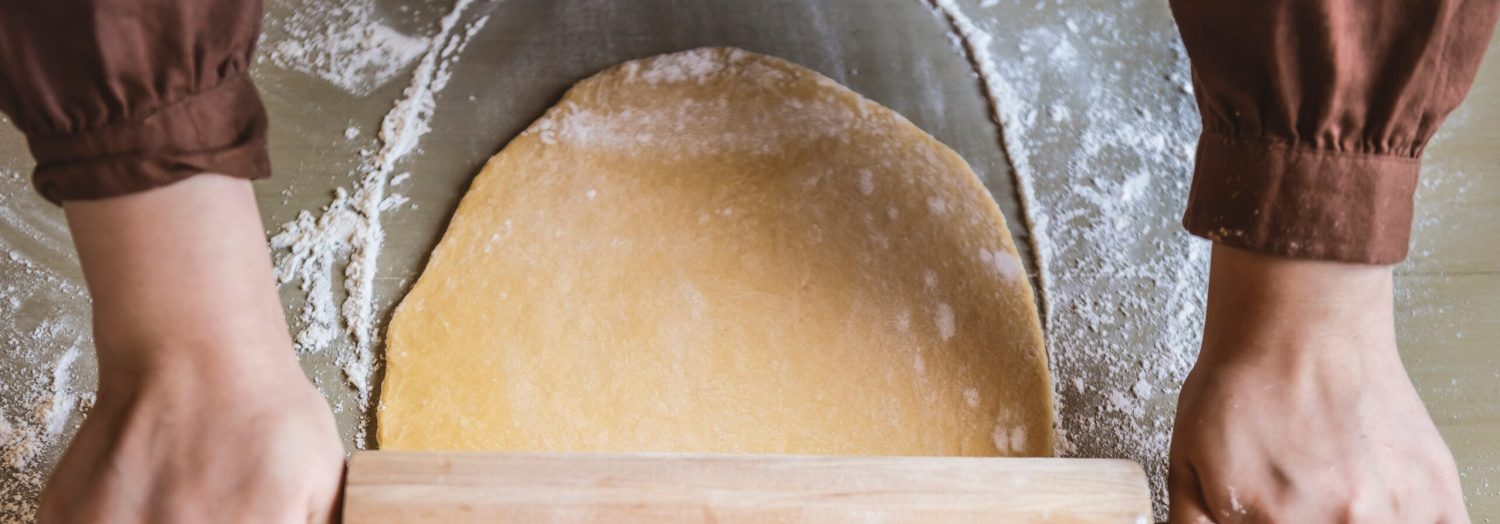Creating your own self-rising flour at home is a simple and cost-effective way to ensure you always have this versatile ingredient on hand. With just a few pantry staples, you can whip up a batch in minutes, perfect for baking cakes, biscuits, and more.
All the ingredients for this recipe are commonly found in most kitchens. However, if you don't have baking powder or salt readily available, they can be easily found in the baking aisle of any supermarket.

Ingredients for Self-Rising Flour Recipe
All-purpose flour: This is the base of the recipe and provides the structure for your baked goods.
Baking powder: This leavening agent helps your baked goods rise and become fluffy.
Salt: Enhances the flavor and balances the sweetness in your recipes.
Technique Tip for Making Self-Rising Flour
When preparing self-rising flour, ensure that the baking powder is fresh and active. To test its potency, add a small amount to hot water; it should fizz immediately. This guarantees that your baked goods will rise properly.
Suggested Side Dishes
Alternative Ingredients
all-purpose flour - Substitute with whole wheat flour: Whole wheat flour can be used for a healthier option, though it may result in a denser texture.
all-purpose flour - Substitute with gluten-free flour blend: For those with gluten intolerance, a gluten-free flour blend can be used to achieve a similar texture.
baking powder - Substitute with baking soda and cream of tartar: Use ¼ teaspoon of baking soda and ½ teaspoon of cream of tartar to replace 1 teaspoon of baking powder.
baking powder - Substitute with self-rising flour: If you have self-rising flour, you can use it directly and omit the baking powder and salt.
salt - Substitute with sea salt: Sea salt can be used as a direct substitute for table salt, providing a slightly different flavor profile.
salt - Substitute with kosher salt: Kosher salt can be used, but you may need to adjust the quantity as it has larger grains.
Other Alternative Recipes Similar to This
How To Store / Freeze Your Flour Mix
Ensure your self-rising flour is stored in an airtight container. This will keep it fresh and prevent any unwanted moisture or pests from getting in.
Place the container in a cool, dry place, such as a pantry or cupboard. Avoid storing it near the stove or any other heat sources, as this can affect the quality of the flour.
If you live in a particularly humid climate, consider adding a silica gel packet to the container to help absorb excess moisture.
For longer storage, you can freeze your self-rising flour. Simply transfer it to a freezer-safe bag or container, ensuring it is well-sealed to prevent freezer burn.
Label the container with the date of preparation. This helps you keep track of its freshness, ensuring you use it within a reasonable time frame.
When ready to use, allow the flour to come to room temperature before incorporating it into your recipes. This will ensure it mixes well with other ingredients.
If you notice any clumping after freezing, sift the flour before use to restore its original texture.
How To Reheat Leftovers
Preheat your oven to 350°F (175°C). Spread the self-rising flour mixture evenly on a baking sheet. Bake for 5-7 minutes, stirring halfway through to ensure even heating. This method helps to refresh the flour and remove any moisture.
If you prefer using a microwave, place the self-rising flour in a microwave-safe bowl. Heat on medium power for 1-2 minutes, stirring every 30 seconds. Be cautious not to overheat, as this can cause the flour to become too dry.
For a stovetop method, heat a skillet over medium-low heat. Add the self-rising flour and stir continuously for 3-5 minutes until warmed through. This method is quick and helps to evenly distribute the heat.
If you have a dehydrator, spread the self-rising flour on a dehydrator tray. Set the temperature to 135°F (57°C) and let it run for about 1 hour. This method is excellent for removing any excess moisture without cooking the flour.
For a more traditional approach, you can use a double boiler. Place the self-rising flour in the top part of the double boiler and heat over simmering water for 10-15 minutes, stirring occasionally. This gentle method ensures the flour is evenly heated without risk of burning.
Essential Tools for Making Self-Rising Flour
Mixing bowl: A large bowl used to combine the flour, baking powder, and salt.
Whisk: A utensil used to blend the dry ingredients together until they are well combined.
Airtight container: A storage container that keeps the self-rising flour fresh and free from moisture until it is ready to be used.
How to Save Time on This Recipe
Measure ingredients in bulk: Measure out larger quantities of flour, baking powder, and salt at once to save time on future batches.
Use a sifter: Sift the flour mixture to ensure even distribution of the baking powder and salt.
Label containers: Clearly label your airtight containers with the contents and date to avoid confusion and ensure freshness.
Batch preparation: Prepare multiple batches at once and store them in separate containers for quick access when needed.
Keep tools handy: Keep your measuring spoons and whisk within reach to streamline the process.

Self-Rising Flour Recipe
Ingredients
Main Ingredients
- 1 cup all-purpose flour
- 1 ½ teaspoons baking powder
- ¼ teaspoon salt
Instructions
- In a mixing bowl, combine the flour, baking powder, and salt.
- Whisk together until well combined.
- Store in an airtight container until ready to use.
Nutritional Value
Keywords
More Amazing Recipes to Try 🙂
- Asian Ginger Dressing Recipe10 Minutes
- Bacon Cheese Frittata Recipe30 Minutes
- Lomi Lomi Recipe15 Minutes
- Crab Sandwich Recipe15 Minutes
- Southern Fried Apples Recipe25 Minutes
- Mexican Fiesta Pasta Salad Recipe25 Minutes
- Blackberry Jam Recipe40 Minutes
- Beef Shish Kabobs Recipe35 Minutes

Leave a Reply